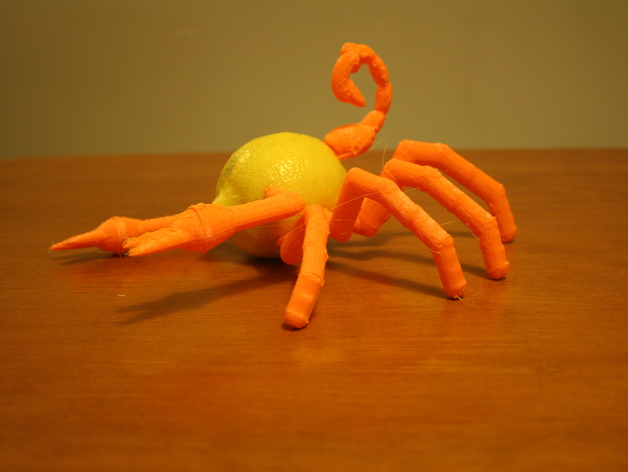
It’s a 3d printer Object? It’s a Fruit? Oh, Maybe it’s an insect!!!
thingiverse
It appears you've provided a detailed guide for a science project about bees, insects, and their life cycles. Here's a reorganized version with added comments: **Project Title:** Exploring Bees and Insects **Objective:** 1. Understand the social structure of bees and their honeycomb. 2. Learn about the life cycle of bees, ants, and butterflies. 3. Encourage creativity and imagination through art and science. **Materials/Resources:** * 20/40 hexagon shapes * Queen Bee figurine * Drone figurine * Worker Bee figurine * Life cycles of bee, ant, and butterfly videos * Tissues, journals, 3D printed insects, playdough, etc. * Laptop for video playback * Insect books * Children's insect magnifying glasses * Microwave * Cupcake ingredients **Activity 1: Beehive** 1. Introduce the queen bee, drone, and worker bee to students. 2. Allow students to explore and build with hexagon pieces, perceiving their roles in the hive. 3. Discuss how bees maximize alveoli while minimizing wax usage. **Activity 2: Life Cycles of the Bee, Ant, and Butterfly** 1. Place life cycle objects in a box for students to observe. 2. Explain what a life cycle is and have them separate the pieces into three life cycles. 3. Show videos about each insect's life cycle (e.g., bee: https://www.youtube.com/watch?v=QEzlsjAqADA, ant: https://www.youtube.com/watch?v=vG-QZOTc5_Q, butterfly: http://www.magicoflife.org/Life_Cycles.pdf). 4. Have students explain the insect's life cycle. **Activity 3: Art and Science - Making My Imaginary Insect/Bugs** 1. Provide materials for students to create their own imaginary insects. 2. Encourage them to combine art and science in their creations (e.g., dragon wings, dinosaur body, scorpion stinger). 3. Allow students to work independently or in groups. **Duration:** * Each activity: 1 hour/1 hour and 30 minutes **Preparation:** * Print STL files for 3D printed insects * Gather materials needed for each activity (tissues, newspapers, playdough, etc.) * Prepare laptop for video playback * Have insect books and children's magnifying glasses available **References:** * http://www.iflscience.com/physics/why-do-honey-bees-make-hexagonal-honeycomb/ * https://ncmns.wordpress.com/2013/06/07/what-butterflies-have-in-common-with-straws/ * http://nautil.us/issue/35/boundaries/why-nature-prefers-hexagons * http://www.enchantedlearning.com/subjects/arachnids/scorpion/Scorpionprintout.shtml **Rubric & Assessment:** * Students should explore Tinkercad or other 3D design software. * This project aims to engage students in science and encourage creativity. **Improving This Project:** * The author started this project on Thingiverse but couldn't finish all files due to time constraints. * The project can be improved by optimizing the STL files and printing them with proper support.
With this file you will be able to print It’s a 3d printer Object? It’s a Fruit? Oh, Maybe it’s an insect!!! with your 3D printer. Click on the button and save the file on your computer to work, edit or customize your design. You can also find more 3D designs for printers on It’s a 3d printer Object? It’s a Fruit? Oh, Maybe it’s an insect!!!.
